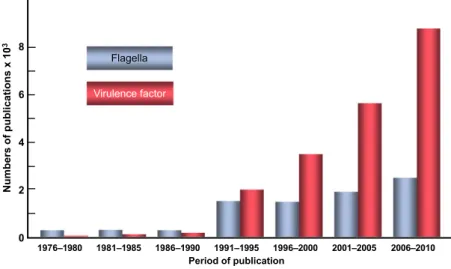E D I T O R I A L
Captivating titles and award-winning labels to promote
premium products of microbiology
DOI: 10.1111/j.1574-6976.2012.00326.x
A bottle of white wine attracted my attention at a super-market a while ago. The bottle had an appealing label depicting a bucolic scene and was decorated with a con-spicuous gold medal. I bought this wine. When I tasted it at home, I was quite pleased with the quality of the prod-uct – but did it really merit a gold medal? I was aston-ished. A closer look at the medal then revealed its true meaning: the prize had been awarded for the most origi-nal label at a recent wine fair. Obviously, the wine grower’s marketing strategy worked, selling a microbio-logical product in a highly competitive market. As a cus-tomer, I was slightly irritated as I realized that I should have paid more attention to the contents of the bottle, rather than to the gold medal.
Trained to observe and assess the true nature of things, scientists would not make this kind of mistake in their professional job, would they? That is the question. How scientific products (such as research and review papers) are labelled can be very important in practice; by labelling I mainly mean the composition of the title and the choice of key words. There are plain titles and key words. For example, studies that are dedicated to the structure and function of flagella will normally have ‘flagella’ in the title, and a search for this key word in the databases of
the scientific literature will retrieve such studies, as long as they are published in indexed journals and books. We see in Fig. 1 that flagella have been a popular subject in scientific publications for a long time; the increase in the number of publications after 1990 essentially reflects the growth of the scientific literature in microbiology and the electronic indexation of these publications. We would see a similar pattern for other microbiological topics of continuing interest, such as ‘peptidoglycan’. However, if we choose another popular topic, ‘virulence factor’, we observe an amazing and over-proportional progression since 1990 (Fig. 1). Fortunately, however, during the last 20 years, pathogenic microorganisms have not become a more severe threat to (human) life worldwide, and while new pathogens keep emerging, the proportion of patho-gens remains very low in the microbial world.
Traditionally, virulence factor means a microbial toxin or enzyme that is directly responsible for damage to the host during infection and that is absent from nonpatho-genic strains. Diphtheria and tetanus toxins are the epitome of classical virulence factors. When their action is blocked by active or passive immunization, the health problem disappears. Most pathogenic microorganisms, however, rely on more complex functions to cause infection, and
8 6 Flagella Virulence factor 4 Numbers of publicatio ns x 10 3 2 1976–1980 1981–1985 1986–1990 1991–1995 1996–2000 2001–2005 2006–2010 0 Period of publication
Fig. 1. Virulence factors on the rise. The numbers of publications were taken from the Web of ScienceTMusing ‘flagella’ and ‘virulence factor’ as key words.
FEMS Microbiol Rev36 (2012) 267–268 ª 2012 Federation of European Microbiological Societies
Published by Blackwell Publishing Ltd. All rights reserved
MICR
many genes and traits can be involved in the expression of virulence. As pointed out by Wassenaar & Gaastra (2001), molecular approaches have resulted in an increasing and impressive amount of data on microbial virulence genes. These include the ‘true’ virulence genes (encoding viru-lence factors) as well as viruviru-lence-associated genes (regulat-ing the synthesis or activity of virulence factors) and ‘virulence life-style’ genes (enabling colonization or evasion of defence reactions of the host). For instance, it may be a simple step to promote flagella to the rank of virulence fac-tors, even in mildly pathogenic bacteria. Thus, with the growing circle of virulence genes, many– previously harm-less – cellular components of microorganisms have acquired the status of virulence factor. This trend began around 1990. In parallel, although I do not have statistic records, it appears to me that ‘virulence factor’ has become an increasingly popular and fashionable label in grant applications, probably because it attracts funding. If these interpretations are correct, the steep rise in publications on virulence factors (Fig. 1) may be, at least in part, a labelling phenomenon.
Selling arguments aside, attractive and explicit titles of scientific papers are crucial. Moore (2010) has written a lucid discussion of how titles can be optimized, and I highly recommend reading his arguments. The take-home message is to place the key concept near the beginning of the title and to make the title as informative and interest-ing as possible. In this way, chances go up that fellow sci-entists will find and read the paper. Immensely popular
phrases like ‘Isolation and characterization of XYZ’, ‘XYZ: past, present and future’ and ‘XYZ comes of age’ are best forgotten.
The Editors of FEMS Microbiology Reviews are grateful to their authors for making efforts to find captivating titles, but regretfully will not award a gold medal for the most original label.
Acknowledgements
I thank Lee Kroos, Stefan Lehner and Christoph Dehio for thoughtful comments on the manuscript.
Dieter Haas Chief Editor De´partement de Microbiologie Fondamentale Universite´ de Lausanne CH-1015 Lausanne Switzerland E-mail: Dieter.Haas@unil.ch
References
Moore A (2010) What’s in a title? A two-step approach to
optimisation for man and machine. Bioessays32: 183–184.
Wassenaar TM & Gaastra W (2001) Bacterial virulence: can we
draw the line? FEMS Microbiol Lett201: 1–7.
ª 2012 Federation of European Microbiological Societies FEMS Microbiol Rev36 (2012) 267–268
Published by Blackwell Publishing Ltd. All rights reserved
